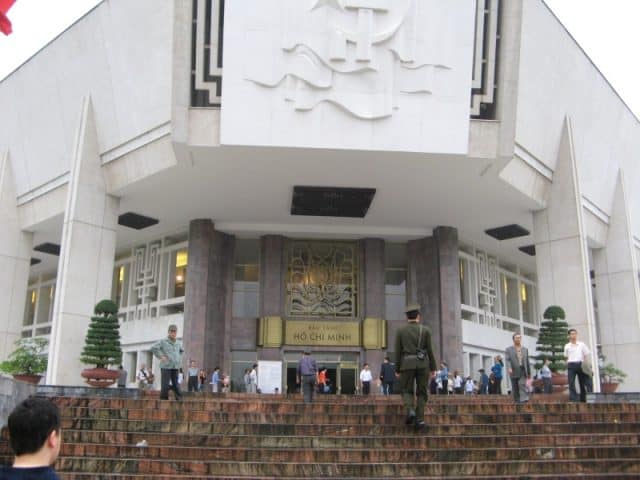Ho Chi Minh Museum is one of the largest in Vietnam, with a total area of up to 18,000 m2, displaying about 120,000 artifacts related to his life and career. The museum at 19 Ngoc Ha, Ba Dinh combines with monuments such as the Presidential Mausoleum, the Presidential Palace relic, the One Pillar Pagoda to create a series of places to visit.
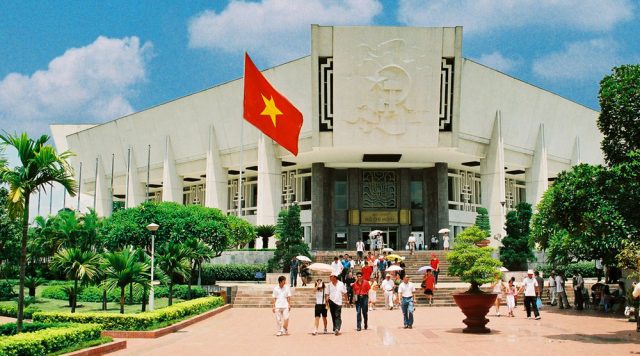
A place to display artifacts and documents about his life and career (Photo: ST)
Ho Chi Minh Museum was built in 1973 in the same area where he read the Declaration of Independence, this work has received sincere help from the former Soviet Union from design to construction stage.
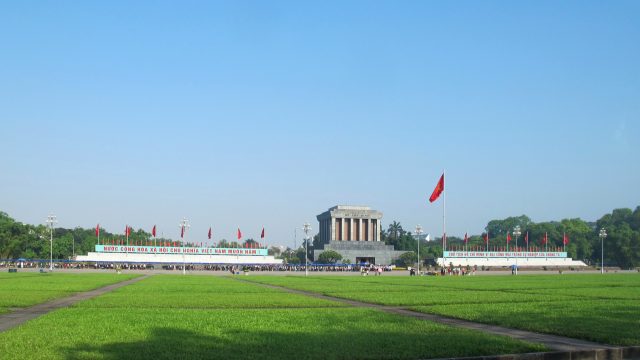
Ho Chi Minh Museum is not far from Ba Dinh Square (Photo: ST)
The 3-storey building follows a unique beveled square block, in the middle of the entrance there is a bas-relief in the shape of a flag with a star and a hammer and sickle symbol showing the revolutionary spirit of national independence. Around the museum campus is a large airy space with many trees and an air-conditioned artificial lake.
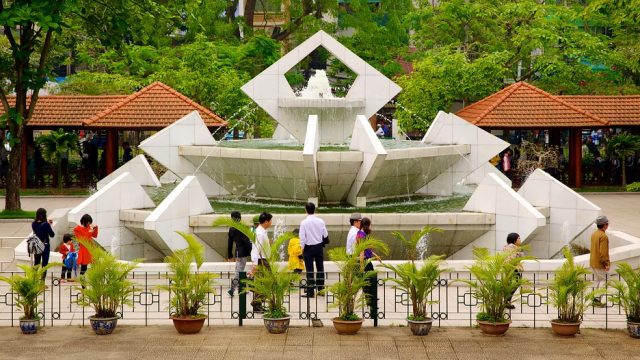
Fountain inside the museum (Image: ST)
Stepping into the lobby inside the museum, there is a bronze statue of President Ho Chi Minh, the statue exuding his charisma and style, making a strong impression on visitors. The museum is displayed according to each stage of Uncle Ho’s active life.
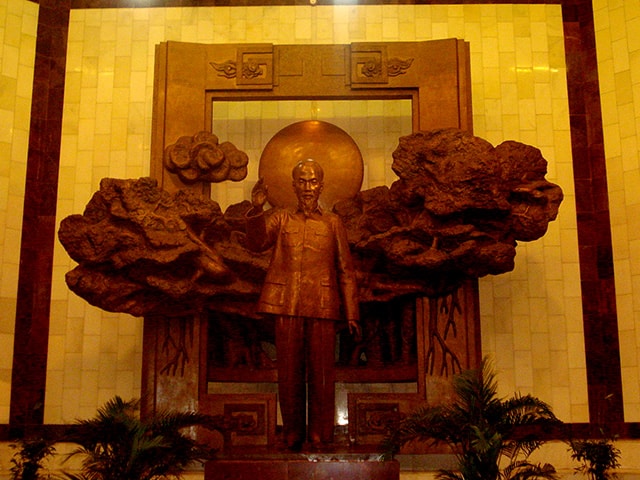
The bronze statue of President Ho Chi Minh in the main hall (Photo: ST)
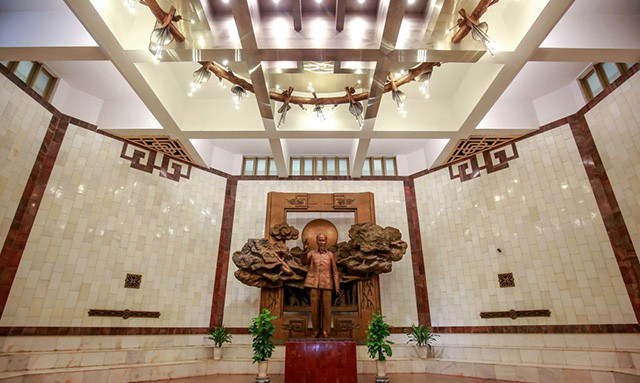
The space inside the museum (Photo: ST)
The first floor displays artifacts and documents on Ho Chi Minh’s biography, outstanding revolutionary activities and the construction of the country according to his will.
– Topic 1: You will be introduced to his biography in chronological order from his birth to his death. Starting with artifacts and images of Uncle’s hometown of Nghe with his parents and siblings during his childhood from 1890 to 1910.
– Theme 2: Next was the arduous journey to find a way to save the country through many countries, through many occupations while studying and studying the path of national liberation from 1911 to 1920.
– Theme 3: Many documents and pictures describe the time he was active in France and made many contributions to national and colonial issues as well as being one of the first members to join the founding of the French Communist Party .
– Theme 4: You will have access to documents about the period when Ho Chi Minh thought deeply formed and made great changes in practical activities, this is the period when he prepared all aspects of his thoughts and ideas. ideology, theory, guideline for the birth of a party in Vietnam, the first party representing the working class in Vietnam
– Theme 5: Display of artifacts during the period when the Communist Party of Vietnam was founded, fought and won independence from the Fascists and Colonists. There are also many documents showing the years of revolutionary activities Uncle Ho was imprisoned in Hong Kong and Guangxi.
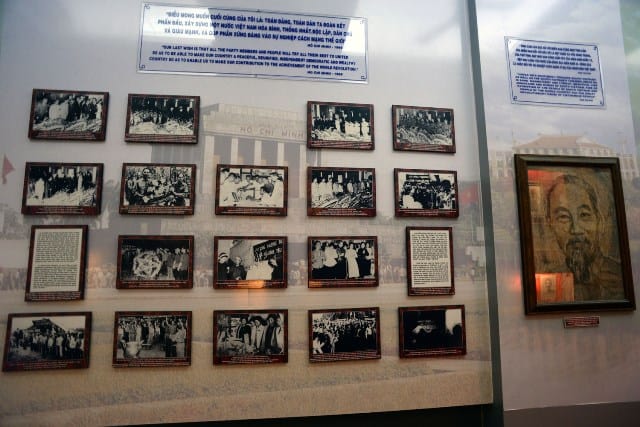
Many valuable documents about Uncle (Photo: ST)

Save the autograph of President Ho Chi Minh (Photo: ST)
Theme 6: The period of Uncle Ho’s life was deeply attached to the 9-year resistance war in the Northwest mountains to protect the fledgling government from 1945 to 1954.
– Theme 7: Revolving around his diplomatic activities and the process of rebuilding the North and fighting in the South.
Theme 8: The last documents about Uncle Ho were also the most painful time for the nation when he passed away forever in 1969.
– Theme 9: Summarizing a whole process of activities with the legacies left by President Ho Chi Minh for the nation.

Artifacts about the homeland of Nghe (Photo: ST)
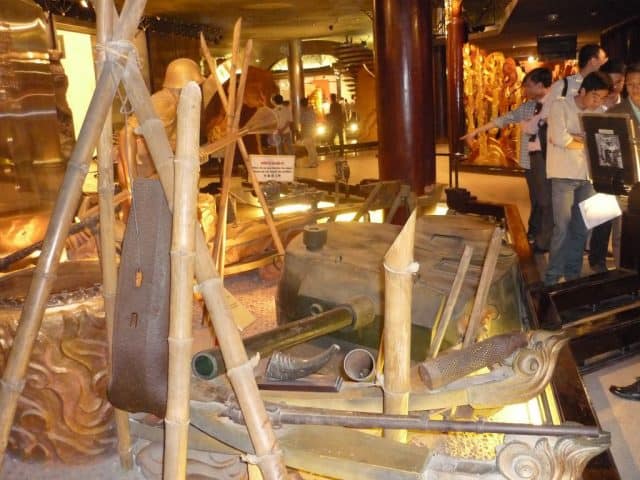
Very simple rustic items (Photo: ST)
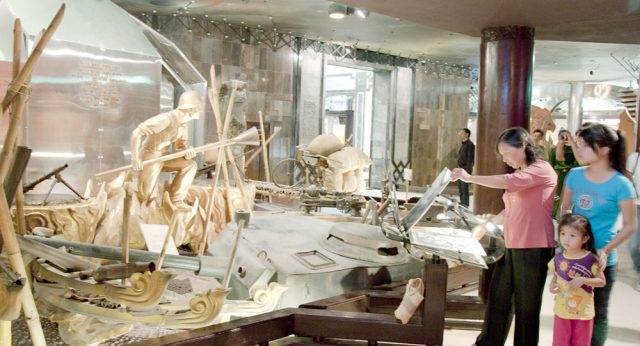
Themed galleries (Image: ST)
The 2nd floor is the place to display the typical struggles and great victories of the Vietnamese army and people under the leadership of Ho Chi Minh, the exhibits are expanded as a deeper step to understand the themes. Topics are displayed on the first floor. From an overview of the situation in the world and Vietnam to the meaning of the October revolution in Russia, the significance of Vietnam’s participation in siding with the Allies to fight against the fascism, the role of Ho Chi Minh with the world revolutionary movement… Finally, there are artifacts talking about Vietnam’s image in the renovation period up to now.
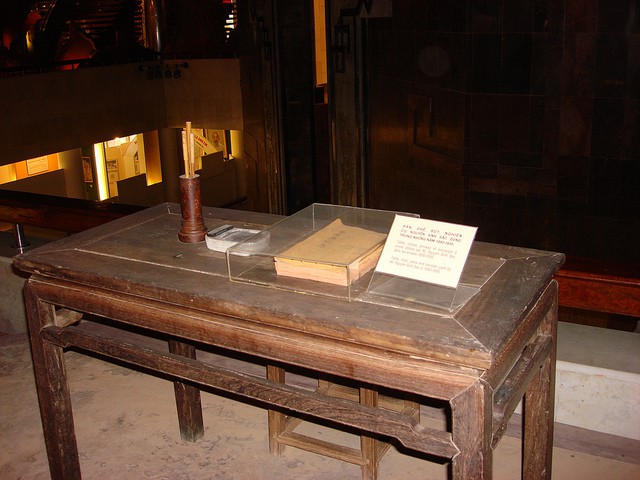
The desk is very simple and rustic (Photo: ST)
The 3rd floor displays thematically the historical landmarks of the region and the world that have an impact on the thoughts and revolutionary activities of the young Nguyen Tat Thanh.
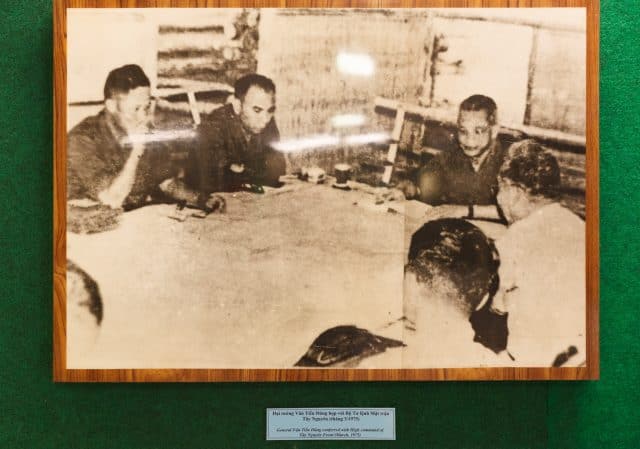
Important historical milestones about his active life (Photo: ST)
Coming to Ho Chi Minh Museum, you will have a better understanding of Vietnam’s modern history through his life. This is also a place where parents often bring their children to visit, which is both entertaining and educational about patriotism as well as educating basic historical knowledge.
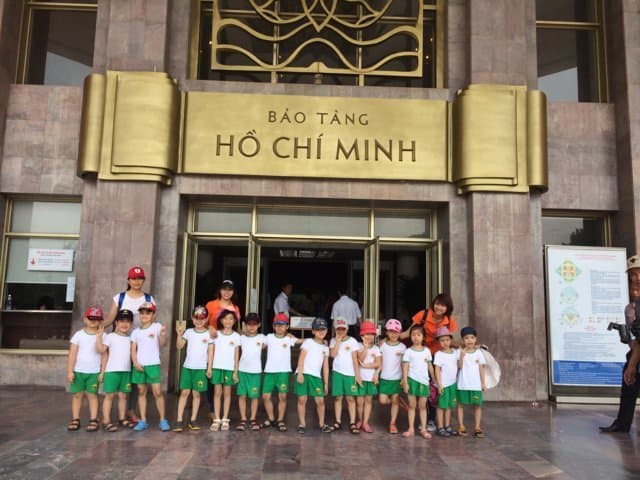
Children visit the museum (Photo: ST)
Many tourists visiting the museum could not help but be touched and pay their respects to President Ho Chi Minh. Ancient artifacts are the most vivid evidence of his life and great personality.
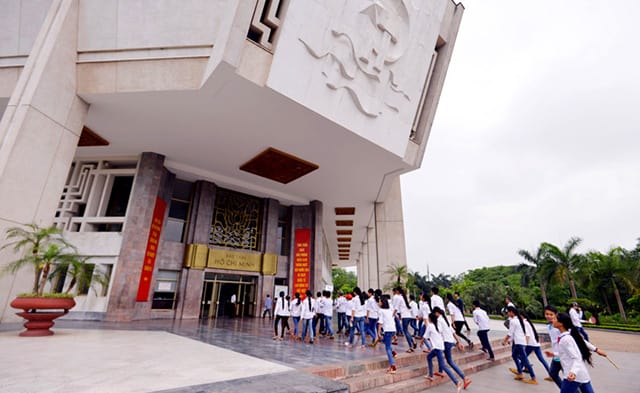
The museum welcomes a large number of visitors every day (Photo: ST)
The number of visitors to the museum is increasing, on average, the museum welcomes about 2000-3000 visitors a day, not to mention the spike in the number of visitors during the holidays. Not only tourists but also a lot of foreign visitors from many countries such as China, Japan, USA, Australia… are also very interested in Ho Chi Minh museum . To meet the needs of visiting and learning about the museum, the management board has built a team of professional guides at the museum who can use many foreign languages, which is convenient for interpreting and introducing artifacts to foreign visitors. outside.
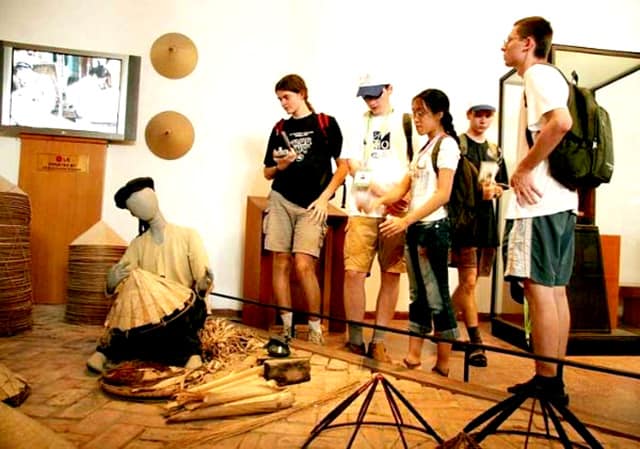
Foreign tourists are interested in strange artifacts (Photo: ST)
Ho Chi Minh Museum is also a familiar address for many domestic researchers and graduate students to find documents and artifacts about President Ho Chi Minh. Currently, in addition to the antique objects being kept on display at the museum, the management board regularly sends research groups to collect and add new artifacts both at home and abroad.
In the museum’s premises, there are many surrounding areas that decorate the landscape, creating a cool space for visitors and strolling.
Opening time to visit the Museum
Opening time: All days of the week except Monday and Friday. Specifically:
- In the hot season (April to October) the morning is open from 7:30 to 10:30; afternoon from 13:30 to 16:00. Only Saturday, Sunday and morning holidays open from 7:30 to 11:00.
- In the cold season (November to March) the morning is open from 8:00 to 11:00; afternoon from 14:00 to 16:00. Particularly Saturday, Sunday, morning public holidays open from 8:00 to 11:30.
To move to Ho Chi Minh museum, you can go by personal vehicle or refer to some bus routes passing through that point such as: Line 09, No. 18, No. 33. Ticket price: 7000 VND/way.
In civilized countries with a long cultural history, museums are considered as the face of the country, that’s why foreigners are very interested in visiting and learning. If you have the opportunity to come to Hanoi, you should once visit the Ho Chi Minh museum to admire a historical treasure about a great son of the Vietnamese nation.
Source: Collected internet.
